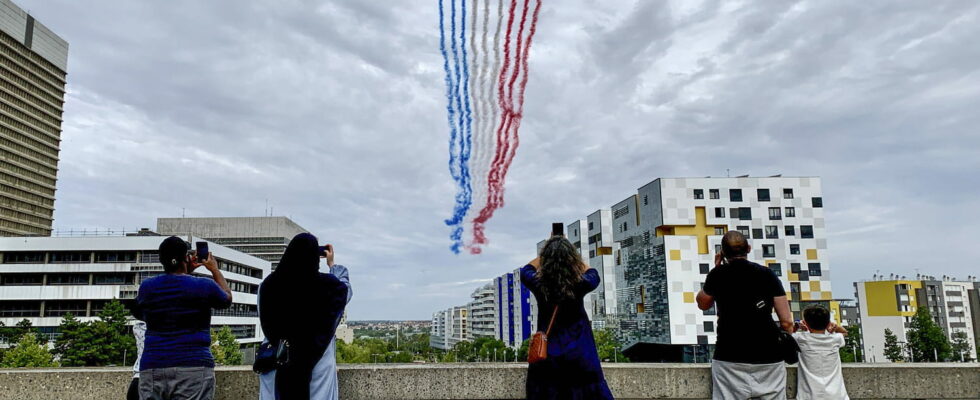NATIONAL DAY. The famous military parade that commemorates the history of July 14th is changing its route due to the Paris Olympic Games. Discover the schedule and program.
The traditional July 14 ceremony will not take place this year on the Champs-Elysées due to the Paris 2024 Olympic Games. It is on Avenue Foch that we will admire the parade of 4,500 troops at 10 a.m. in the presence of the President of the Republic Emmanuel Macron. 45 planes and 22 helicopters will also offer a majestic spectacle from the sky. For this edition, a double theme has been announced: “Olympism and the armies”. The July 14 parade will also be an opportunity to celebrate the 80th anniversary of the Liberation of France and the 90th anniversary of the Air and Space Force.
More specifically, “the ceremony will begin on Place Charles-de-Gaulle, before moving along Avenue Foch for a parade that is a third shorter,” explains General Christophe Abad, military governor of Paris. “The separation of the units in front of the presidential stand will take place in a much smaller space than that offered on Place de la Concorde (…) In fact, the 2024 vintage should be characterized by a proximity, an unprecedented intimacy with the public, which will give it a special dimension.”
Discover below the schedule of the July 14, 2024 parade, hour by hour.
- 09:45 : Finalization of the installation of foot troops on the Étoile site.
- 10 hours : arrival of the President of the Republic Emmanuel Marcon on Avenue de Friedland.
- 10:10 : honors paid to the President of the Republic at the bottom of Avenue Foch.
- 10:16 : initial animation on the theme of the 80th anniversary of the Landings, the Liberation of France and the Victory.
- 10:32 : parade of helicopters and planes.
- 10:36 : parade of the troops in honor, followed by the parade of the troops on foot.
- 11:17 : parade of planes.
- 11:23 : horse parade.
- 11:25 : final animation on the theme “Armies and Olympism”.
- 11:41 : departure of the President of the Republic Emmanuel Marcon.
After July 14, 1880, the military parade became an institution. On July 14, 1919, Marshals Foch, Joffre and Pétain paraded on horseback on the Champs-Elysées – even passing under theTriumphal arch – to celebrate the victory in the First World War acquired a few months earlier. This is when the traditional July 14 parade takes up residence on the most famous avenue in Paris. After an eclipse during the Second World Warthe July 14 parade takes on its current appearance with the multiplication of tanks and planes. However, some presidents of the Republic bring short-lived innovations.
During his term, Valéry Giscard d’Estaing moved the parade to other streets of Paris, such as the Cours de Vincennes, the Ecole Militaire or between Bastille and République in Bastille. In 1982, François Mitterrand postponed the parade until nightfall. The ceremony is perfectly smooth. The parade rehearsals generally take place on July 12 at dawn, two days before the key date. It opens with the passage of planes and helicopters. In all, around 4,000 soldiers parade on the Champs-Elysées at a pace of 120 steps per minute. Students from prestigious schools such as Saint-Cyr appear in full uniform. The march is traditionally closed by units of the Foreign Legion, famous for their voluminous beards and slower pace.
For almost a century, the commemoration of July 14 was abandoned. It reappeared in 1880, under the Third Republic. The regime, in order to consolidate itself, sought to build a new national imagery, around republican symbols. This is how the Marseillaise became the official anthem and July 14 became a national holiday. But the proposal, which came from the Seine MP Benjamin Raspail, was not unanimously welcomed by the Assembly. Some MPs questioned the violence of July 14, 1789. And it was finally around July 14, 1790 that the consensus was reached! That year, the monument topped with the statue on Place de la République was also inaugurated, and concerts and fireworks were held everywhere. The “July Column” which overlooks the Place de la Bastille does not refer to July 14, 1789. It bears the name of the victims of the revolutionary days of July 1830, the “Three Glorious Days”.
